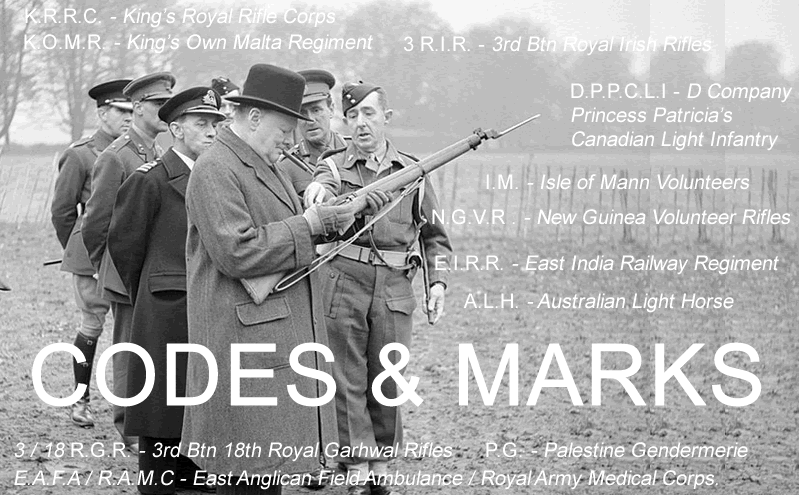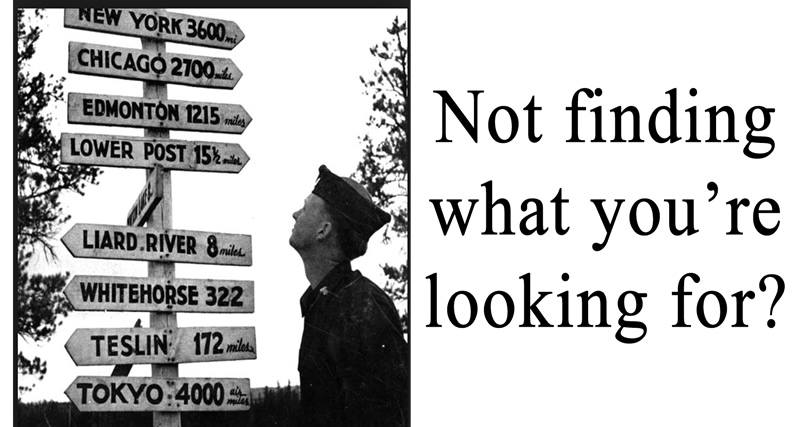
Codes & Marks
Photo notes: British Prime Minister Winston Churchill examines the new Lee-Enfield No.4 Mk 1 rifle during a visit to the 53rd Division in Kent, England, 20 November 1942. Imperial War Museum photograph H-25436. Photographer (Major) W.G. Horton. [1]
CODES & MARKS
High-quality swords, dating from the Roman Empire of almost 2000 years ago, have been found with factory stamps. Viking spears and shields have been found marked with runes like NITHIJO TAWIDE, (“Nithijo made this.”) [2]
Military equipment, such as the Lee-Enfield rifle, are often found with letters, numbers, codes, runes and symbols stamped, etched, scratched, embossed, pressed or branded into the wood or metal. All those marks, taken together, tell a story of who made the rifle, who repaired it, who owned it, who used it and where it went.
Our interest is in military history; we focus on government and unit markings found on individual Lee-Enfield rifles, bayonets and oilers to guide us to the stories of the men who carried them.
GOVERNMENT MARKSFrom earliest times, people have used some type of mark to say, “This is mine!” Marking military equipment and supplies with an ownership mark is a symbol of power. Providing military equipment and supplies to allies, friends, supporters and dependents is a way of extending and projecting power. Captured enemy equipment, marked as yours, sends a powerful message. Here we examine government marks and symbols found on Lee-Enfield rifles and bayonets.
UNIT MARKSPrior to the Great War (World War One, WWI, 1914-1919), the Short, Magazine, Lee-Enfield (SMLE) left the factory with a buttstock marking disc, a small, removable piece of brass inletted into the right side of the buttstock; a place for the Unit Armourer to stamp a unit identification. At that time, rifles and bayonets were routinely unit marked; usually on the marking disc, but also into the buttstock wood as well as other easily visible locations. The practice of placing unit markings on military gear was not limited to the British Empire.

Manufacturers marks
Inspection marks
Proof marks
Armourer’s marks
Import/export marks
If that's what you're looking for, there are already hundreds of pages of published information readily available; you can find some of the best books and pamphlets listed in our Notes and Sources page.
Additionally, these sources cover, in great detail, the various makes, models and versions of Lee-Enfield rifles and bayonets - topics that we don't cover here. You really should buy a book. Fortunately, while you're waiting for that book to arrive, there a few websites worth mentioning.
If you're new to Lee-Enfields, the best place to start (other than the books and pamphlets we've already listed), is Jay Currah's Lee-Enfield website. https://www.milsurps.com/enfield.php
There is also the Lee-Enfield Knowledge Library. https://www.milsurps.com/forumdisplay.php?f=72
There are some Lee-Enfield forums that are worth looking at.
The Lee-Enfield forum on GunBoards: https://forums.gunboards.com/forumdisplay.php?55-The-Lee-Enfield-Forum
The Lee-Enfield forum on Enfield-Rifles.com: https://www.enfield-rifles.com/enfield-rifles_forum1.html
All of these people have invested a lot of blood and treasure to write articles, take pictures, provide detailed drawings and tables of serial numbers, model development and production, and all levels of minute details. We see no good reason to reinvent that wheel here.
We can, however, provide that what you won't find elsewhere - history, context, a small snapshot inside the Big Picture of the ordinary people who carried the rifles and did all the work. And lots of footnotes. You'll find links to all of our source materials, articles, museums, collections and websites so you can follow the thread of your interests wherever it takes you.
Page Notes & Sources
[1] Photo notes: IWM H-25436: None of the other men in the photograph are identified. The description “new Lee-Enfield No.4 Mk I” is part of the IWM description. All of the text visible in the photo has been added for this website; the photo has been slightly modified to accommodate the text.
[2] Kolberg, Are Skarstein. “Warfare in Viking Age Scandinavia.” The Journal of Military History, January 2019, pgs. 13-14.
[3] Photo notes: Unidentified American soldier studying a signpost. The nearest settlement is Laird River (British Columbia, Canada), eight (8) miles away. Photographer unknown. International News Service press photo dated 08 October 1943.
The accompanying text reads “Where is Seattle? That’s the question one can well ask surveying this signpost miles from Whitehorse. The highway originally thought of as a road that would connect Seattle with Alaska went astray somewhere.”
Original photo found on eBay: item #3530-0579-28956. Retrieved 2020-08-01.